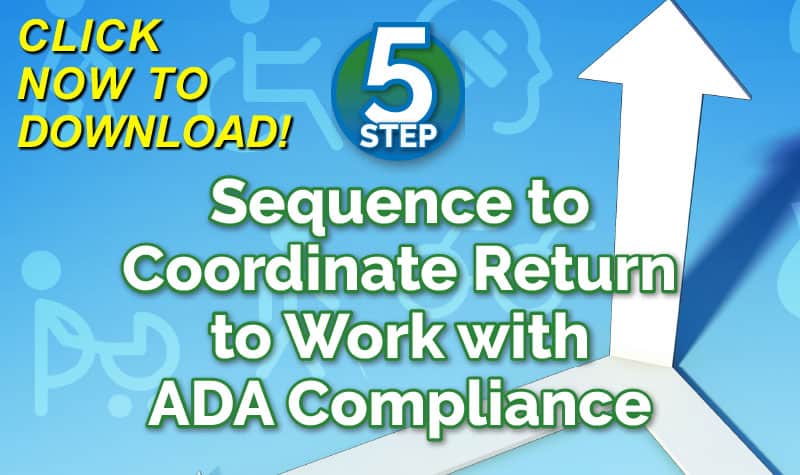The LexisNexis Workers Compensation Law Community Powered by Larson's often offers insightful commentary into our industry. Below, we compile three of the most interesting contributions of late.
Stuart Colburn
Stuart Colburn, an attorney for Downs Stanford recently shared a blog regarding a November 2011 Centers for Disease Control and Prevention (CDC) report that described prescription painkiller abuse as “a public health epidemic.”
Stuart Colburn, an attorney for Downs Stanford recently shared a blog regarding a November 2011 Centers for Disease Control and Prevention (CDC) report that described prescription painkiller abuse as “a public health epidemic.”
Colburn noted the CDC feels that changing the the way prescription painkillers are prescribed would reduce misuse, abuse and overdose but still allow access to safe, effective treatment.(WCxKit)
Colburn frankly citizens the workers compensation system as contributing to these addictions and indirectly by contributing to lost time and injuries “attributable to decreased alertness and other ill effects of working while abusing prescription drugs.”
Colburn continues, “America's prescription drug abuse (PDA) problem is not nearly as well known as our War on Drugs. No war has been declared and yet American lives are being lost. The statistics are well known. American citizens make up 4 percent of the world's population. Yet, we consume 66 percent of the world's illegal drugs.”
His blog continues to site fascinating drug statistics not only from the CDC but also the U.S. Military, various states and many others. It is well worth a read.
Brian J. Caveney
Doctor and lawyer, Brian Caveney also writes in the LexisNexis communities’ blog an article titled, “Another Busy Year for Workers’ Compensation and Occupational Health.”
He concludes that the Patient Protection and Affordable Care Act (PPACA) of 2010 has changed much for the workers compensation industry including The United States Department of Health and Human Services adding eight substances to its Report on Carcinogens.
“Formaldehyde and aristocholic acids are now listed as known human carcinogens, and six other substances-captafol, cobalt-tungsten carbide, inhalable glass wool fibers, onitrotoluene, ridelliine, and styrene-are now considered as reasonably anticipated to be human carcinogens. This brings the total to 240 identified substances in the listings demanding thoughtful approaches to minimize exposure to workers,” Caveney wrote.
He also said the Fukushima Daiichi nuclear power plant in Japan has had great affect on the WC industry. “Readers of Occupational Injuries and Illnesses (LexisNexis) can refer to Chapter 44 for recent updates on the physics of radiation contamination and possible human health effects of exposure,” he wrote.
For WC matters regarding low back claims, Caveney directs readers to the updated Chapter 15 in Occupational Injuries and Illnesses (LexisNexis. And, lastly, he noted 2011 is the 30th anniversary of the identification of the human immunodeficiency virus (HIV). “The infection has transcended its original death sentence upon diagnosis to a chronic disease state when adequately treated with the panoply of various treatment options these days. Once widespread fears of transmission in a host of occupational situations has thankfully now been limited to mostly preventable scenarios. Chapter 46 of Occupational Injuries and Illnesses (LexisNexis) reflects these advances,” he wrote.
To read more, follow the above link to Caveney’s article.
“Workers’ compensation is no stranger to controversy,” writes attorney Robin Kobayashi in her LexisNexis blog Workers’ Compensation in a Medically Overtreated Society.
She cites physician Nortin M. Hadler, MD new book Rethinking Aging: Growing Old and Living Well in an Overtreated Society. “Dr. Hadler continues his no-holds-barred approach, warning that the Baby Boomer Generation and Generations X and Y hold unrealistic notions about defying the aging process with medical technology, thereby making them more susceptible for ‘medicalization and overtreatment,’ “ she wrote.
Kobayashi notes that marketing has become “sophisticated and pervasive in playing off people’s fears about health and longevity. … It’s no secret that Dr. Hadler has had it with insurance companies and even the AMA Guides for that matter. He once argued that attempts to adhere to the AMA Guides to quantify impairment were, in his opinion, ‘an unappealing, if not Orwellian, exercise, and not just for musculoskeletal diseases but for all diseases.’ “(WCxKit)
Read more of Kobayashi’s research and opinion by following the link above. She concludes, “Here, in our world of workers’ compensation, we can’t deny the fact that workers’ compensation medical costs are soaring. Whether you’re an injured worker, attorney, judge, or claims adjuster, we need to make the right choices about medical care, to educate ourselves, and to stop being conditioned into believing that medical treatment can always help/save us.”
The material above is contributed by Lexis Nexis Workers Compensation Law Community.
Author Rebecca Shafer, JD, President of Amaxx Risk Solutions, Inc. is a national expert in the field of workers compensation. She is a writer, speaker, and website publisher. Her expertise is working with employers to reduce workers compensation costs, and her clients include airlines, healthcare, printing/publishing, pharmaceuticals, retail, hospitality, and manufacturing. She is the author of the #1 selling book on cost containment, Manage Your Workers Compensation: Reduce Costs 20-50% www.WCManual.com. Contact: RShafer@ReduceYourWorkersComp.com.
ABC's of WORK COMP COST REDUCTION Book: www.WCManual.com
WORK COMP CALCULATOR: www.LowerWC.com/calculator.php
MODIFIED DUTY CALCULATOR: www.LowerWC.com/transitional-duty-cost-calculator.php
SUBSCRIBE: Workers Comp Resource Center Newsletter
Do not use this information without independent verification. All state laws vary. You should consult with your insurance broker or agent about workers comp issues.
©2011 Amaxx Risk Solutions, Inc. All rights reserved under International Copyright Law. If you would like permission to reprint this material, contact















